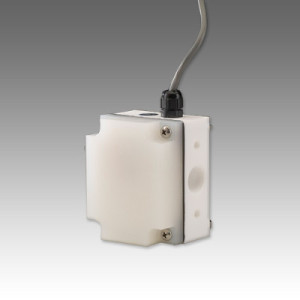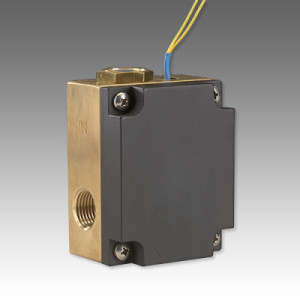Flow Monitor or Flow Meter?
Don’t Confuse Them!
Measuring fluid flow is difficult. To start with, there’s the question of whether to measure volume or mass – i.e. flow monitor or flow meter. Then within each category there are multiple technologies to choose from. Cost rises with accuracy, and some high-precision methods lack robustness for industrial application, especially in large, distributed plant environments. That’s why, before committing to a flow measurement method, it’s important to step back and consider how the data will be used.
Do you really need numbers?
If flow values will drive some real-time process control system, it probably is necessary to perform measurement. In many situations though all that’s needed is to know when flow moves outside of nominal operating conditions. For this kind of task a flow monitor is often a smarter choice than a meter.
Flow monitors like the 500 Bypass series from Florida-based ChemTec work by detecting the position of a piston floating in the fluid stream. If flow varies, the piston moves, and this is detected by the monitor. The 500 BP monitors have an adjustable set point, allowing users to decide the permissible deviation from nominal flow before an alarm signal is sent.
Specialty Gas Production
For a better appreciation of the value of monitoring, consider the systems used for producing, blending and handling specialty gases. Specialty gases are those like argon, hydrogen, krypton and neon as well as blends like carbon dioxide. They’re used in scientific and research activities as well as for testing and monitoring, and are distinguished from industrial and medical gases by their high purity (or blend accuracy,) and relatively small volume production.
Production usually involves cryogenic distillation, the process of liquefying air then warming it carefully to boil off the various fractions. After filtration the gases then go into clean, dry cylinders for storage and distribution, (blended gases having first been precisely mixed.)
Throughout these processes it’s important to confirm that gas is flowing at the expected rate. A sudden increase in flow could indicate a leak downstream or a pump problem while a reduction might mean a filter blockage or upstream leak. Flow meters are an unnecessarily complicated way of providing this function. Many lack the robustness needed for use outdoors, especially on large industrial sites, and some aren’t suitable for automation at all. Flow monitors are a reliable and cost-effective alternative that once installed need very little attention.
Define your needs
When designing and installing fluid handling systems it’s common to assume that flow measurement is needed. In many cases however, a review of the functionally needed reveals flow monitoring to be the better choice. Flow monitors are sturdy devices able to handle a wide range of media and operating conditions. To learn more, call Ryan Herco Flow Solutions at 800-848-1141 to speak with a product specialist.

